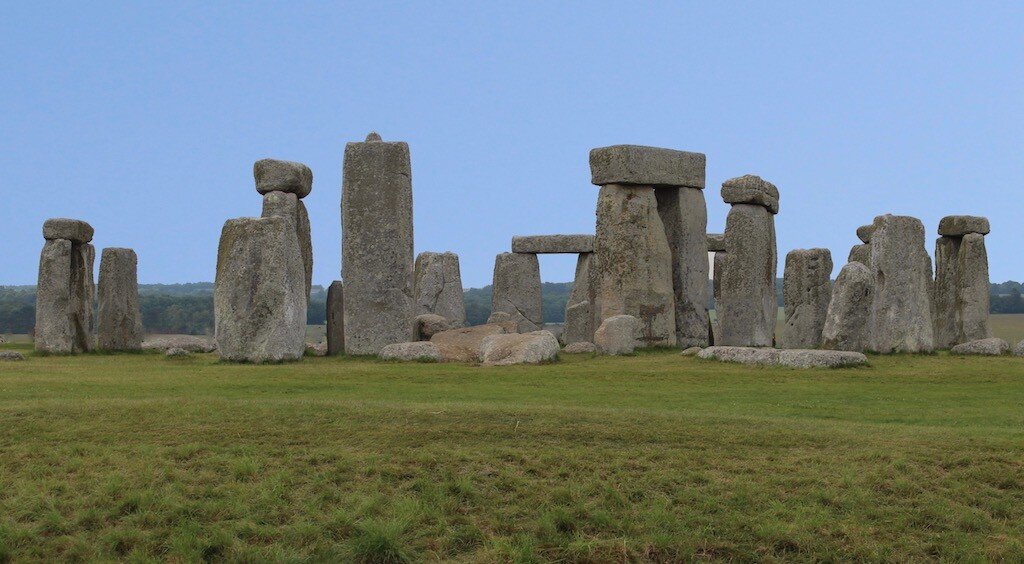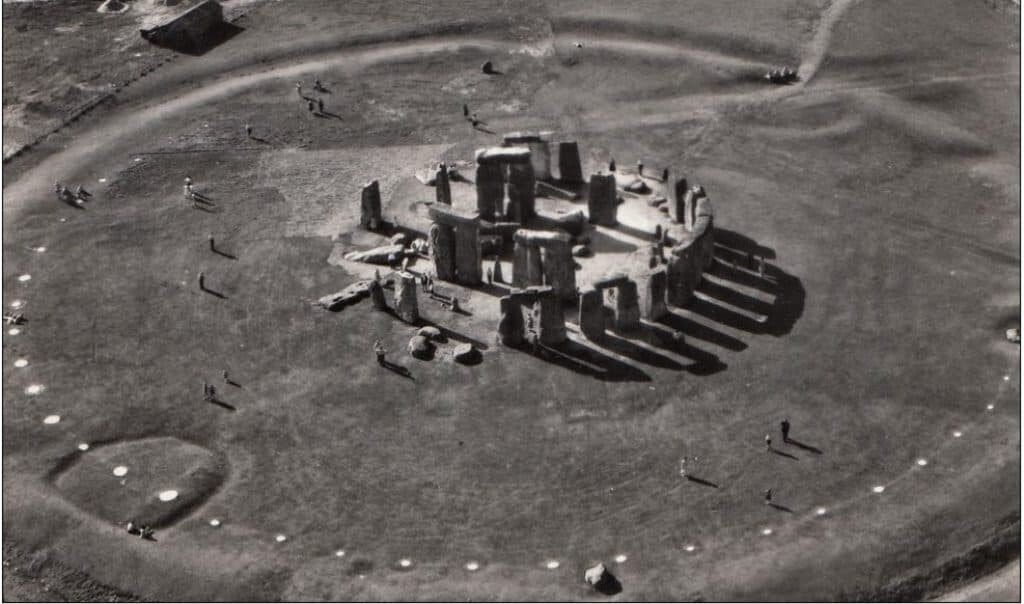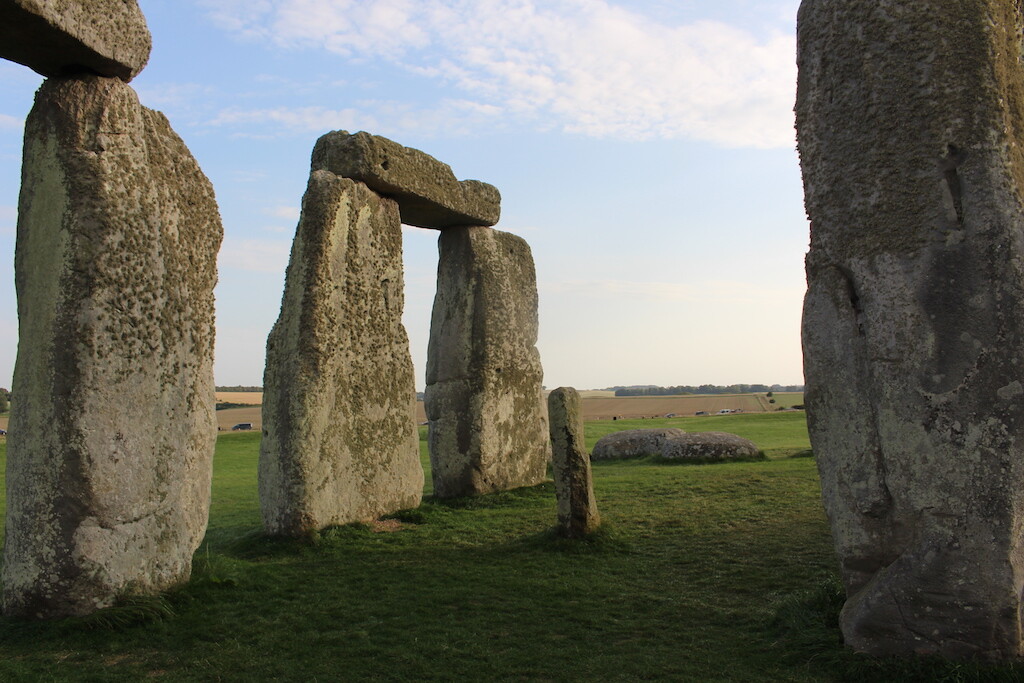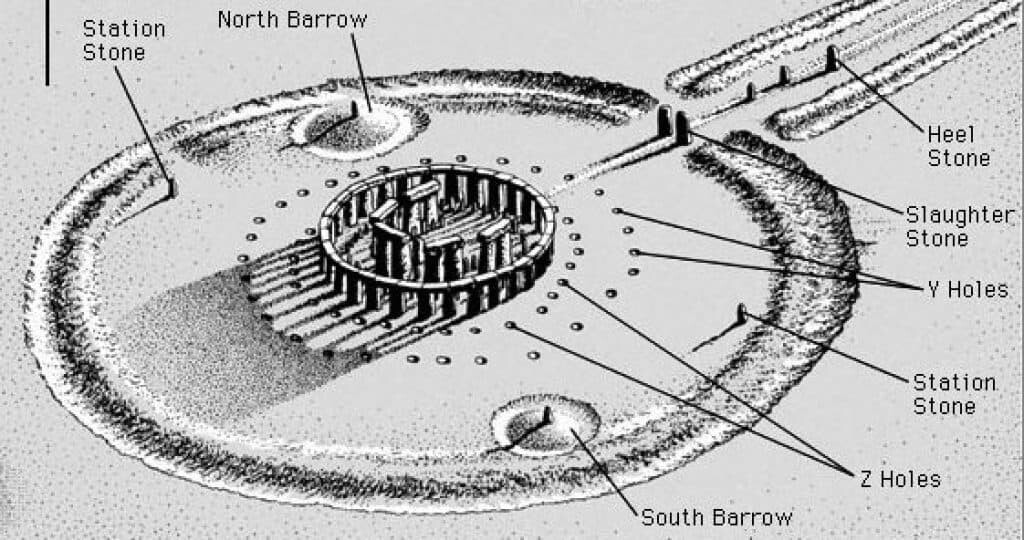Stonehenge megalithic site in England is one of the world’s most puzzling archeological mysteries today. Human activity signifying potential religious and funerary activity dates back to about 8000 BCE, but scholars are still not certain exactly how the later bluestone circle was used. From a religious temple to a seasonal calendar, the theories are endless. Nonetheless, the site held such significance that the communities of the Salisbury plains took great care and effort constructing and reconstructing the monument over many millennia.

Early Discoveries
A rough timeline consists of different stages of the most intense construction between about 3000 BCE and 1600 BCE. Most researchers believed that initially, the site as we see it today began with a circular-shaped ditch constructed for unknown purposes. Unfortunately, the destruction of most of the ditch took place. Archaeologists completed an excavation of the eastern side of the ditch in the 1920s.
Also in the 1920s, scientists discovered the “Aubrey Holes,” named after an antiquarian named John Aubrey (1626 – 1697) who many believed discovered the pockets. However, there is current debate as to whether what he described as holes dug in the site are the same as the holes that bear his name today. There are 56 Aubrey Holes, about one meter deep. They lie just inside the ditch. They were dug for unknown reasons. Later research dismissed Aubrey’s conclusion of using the site as a druid temple.
Bluestones
The next wave of construction at the site took place in the third century BCE. Some of the larger stones still visible today went up during this time. Those stones consist of large “sarsen” stones and a group of stones known as “bluestones.” Research indicates that the bluestones came from a specific place in Wales, approximately 150 miles from the current site. It is uncertain just how the people of the area moved the stones from Wales to Salisbury, but there are theories. Perhaps they used a series of logs to roll the stones. Alternatively, a glacier may have naturally relocated the stones closer to the site. Lastly, they could have utilized various method such as logs on land and rafts on local rivers. In fact, similar movements of large stones by way of wooden poles occurred in various places in Asia.
Some of the bluestones have features such as grooves to fit some stones together, leading one to believe that the bluestones once looked quite different than they look today.

Sarsens and Trilithons
The famous circle of sarsen stones was set up in distinct patterns. The internal circle included the design of large stones consisting of two vertical stones supporting a horizontal stone at the top (called “trilithons”). These stones have survived a remarkable length of time, although some have fallen since their initial placement. Near the center of the site is a single stone, the Altar Stone. It is made of sandstone. The Altar Stone originated in Wales and now stands in its original place. Its purpose is unknown.
There were originally two sets of sarsen stones, one larger circle and then a smaller set within that circle. The inner trilithons are actually in the shape of a horseshoe and originally consisted of five trilithons. The sarsen stones of the inner horseshoe are thought to have been brought to the site at the same time as when the bluestones were transported.
An outer circle of similar stones surrounds the horseshoe of trilithons. Some of these have fallen over the millennia. But, it appears the originally completed circle had about 30 trilithons.
There are also some stones that are outside the pattern of Stonehenge. There was a rectangle of stones that may have marked important astronomical phenomena such as the placement of the sun at solstices.
The Heel Stone and Slaughter Stone
Heel stone is another important stone. It is a boulder that is on the outside of the circular placement of the other stones. It lies near one of the entrances to the outer circle of the site. Also, a fallen stone called the Slaughter Stone that may originally have stood with two other similar stones near one of the site’s entrances.
In 2008, scientists discovered a trail known as the Avenue that stretched from Stonehenge to the River Avon. Some researchers posit that this was part of the route the large stones took when they came from their original sites.
Stonehenge Timeline
The construction of Stonehenge occurred in phases, rather than all at one time.
c. 8500 BCE – 7650 BCE
Although the main construction phase began several thousand years later, evidence shows that people had been utilizing the site well before and after the erection of the large stones. The first structure on the site was a series of large totem poles in holes in the ground, possibly for religious purpose. Unfortunately, the logs have completely disintegrated over time. However, various researchers found traces of the original holes to the north-east of the main henge.
c. 3700 BCE
Stonehenge seems to have been only part of an artificial site in the area. A series of ditches and a causeway commonly known today as Robin Hood’s Ball is approximately three miles from the main site. It shows some signs of ancient human activity. However, the site is not thoroughly excavated and studied. According to some scholars, religious ceremonies may have taken place on the site.
c. 3100 – 3000 BCE
There were two separate stages of the site’s development in a very short time. These would see the installation of more large wooden poles in the area and possibly the initial bluestones. During excavations, cremated remains of as many as 150 bodies were found buried at this time.
c. 2550 BCE Beaker People?
During this period, the stone trilithons that we see today replaced the wooden poles. As noted, there is a great degree of uncertainty about the transportation of the stones to the site.
Stonehenge Origin and Uses Theories
Some academics have claimed that the site of the henge was originally an earth monument carved out of the ground with animal bones as tools. It was several thousands of years later that people first placed stones in those grooves and patterns.

There are only a few theories on the construction of henge. Although, there are various suggestions and outright misinterpretations of who built this structure that spanned many generations of workers.
There is a possibility that there was no sole purpose for the monument over time. One group could have used the monument as an astronomical tool while another later society used it as a calendar. At other times, it served as a religious or burial site.
Catacombs of San Gennaro: Ancient Site of Worship and Burial
Most people with only a passing amount of information may be familiar with the theory that the supernatural powers of ancient druids placed the stones. Writers of the first century BCE, including Julius Caesar, made this claim. But, in fact, Stonehenge had stood at least 2,000 years before druids lived in the area.
The Arthurian legends proclaim that the wizard Merlin put the henge together in the fifth century CE from stones in Ireland in recognition of the soldiers who had fallen in battle. He was able to lift the heavy stones because he had transformed himself into a man more than 20-feet tall.
Stonehenge Archer Burial
Still more excavations in 1966-1967 discovered further holes presumedly dug for wooden poles. Additionally, experts recovered the first entire human remains in the surrounding area. The individual called the “Stonehenge Archer” is a Bronze Age skeleton that dates to 2300 BCE. His gravesite included arrowheads and a primitive wrist guard, thus giving him his name. His skeleton now lies in a museum in Salisbury.
Early Archaeology At Stonehenge
Researchers and scholars have spent years trying to dig out Stonehenge’s secret past. The first known attempt to uncover the facts about Stonehenge occurred in the 1620s. King James requested that architect Indigo Jones date the henge. Jones did his study and incorrectly concluded that the Romans built it.
Between 1874 and 1877, a researcher named Flinders Petrie conducted a thorough examination of the site. Among other accomplishments, he created a numeric labeling system to organize the stones and features of the site. Petrie’s system has been in use since its inception.
In modern times, stones of the henge have fallen. Thus, experts became concerned about the soundness of the site and the welfare of visitors and excavation researchers. In 1901, a scientist, William Gowland, successfully straightened one leaning trilithon. After his research on the site, Gowland indicated that the construction of the henge took place in the late Neolithic or early Bronze Age.
Modern Discoveries
Between 1919-1926, the researcher Lieutenant-Colonel William Hawley thoroughly excavated and researched the south-eastern half of the site. He found a pick made from an antler and determined that this is probably the type of tool that carved out the early aspects of the site from the native soil.
Stonehenge lay undisturbed through the 1930s and WWII. In 1950, a 14-year study began in order to stabilize some of the stones and further survey the site and its surroundings.
Related: Woodhenge: Lesser Known Neighbor of Stonehenge
There were two major excavations in 2008. In the first, archaeologists studied the early bluestone arrangements. The second, possibly inspired by the 1966-1967 excavations, searched for evidence of cremations at the bottom of one of the Aubrey Holes.
Indeed, there were remains of adults and children, cremated by humans and dated to between 3000 BCE and 2500 BCE. Furthermore, there were also discoveries that led to educated assumptions about the eating and religious habits of those who created different phases of building the site.

Ancient History Protected
Stonehenge today is an archaeological highlight for scholars and amateur theorists around the world. While it is currently not generally accessible to tourists, a nearby encircling path shows the glorious monument up close nonetheless. And the site itself is occasionally open to modern followers of druidism and other similar religious beliefs.
Today, over one million people visit the site every year. Therefore, Natural Trust, its owners, protects the site. As an enduring testament of our distant past, Stonehenge will remain a constant bundle of unanswered questions for future generations to marvel.
Sources:
A&E History
Britannia
English Heritage
University of Virginia
“Where is Stonehenge?” by True Kelley. ISBN: 0448486938.